-
 Bitcoin
Bitcoin $83,958.5270
2.13% -
 Ethereum
Ethereum $1,879.4414
4.19% -
 Tether USDt
Tether USDt $0.9997
-0.04% -
 XRP
XRP $2.1265
2.78% -
 BNB
BNB $613.1925
2.97% -
 Solana
Solana $128.9499
2.16% -
 USDC
USDC $1.0000
0.00% -
 Dogecoin
Dogecoin $0.1729
5.20% -
 Cardano
Cardano $0.6780
4.58% -
 TRON
TRON $0.2347
1.44% -
 Toncoin
Toncoin $4.1190
4.91% -
 Chainlink
Chainlink $13.9593
5.21% -
 UNUS SED LEO
UNUS SED LEO $9.2071
1.10% -
 Stellar
Stellar $0.2694
2.45% -
 Avalanche
Avalanche $19.4424
4.37% -
 Shiba Inu
Shiba Inu $0.0...01288
5.66% -
 Sui
Sui $2.3684
4.54% -
 Hedera
Hedera $0.1680
4.79% -
 Polkadot
Polkadot $4.1834
4.17% -
 Litecoin
Litecoin $85.0611
1.17% -
 MANTRA
MANTRA $6.2987
1.18% -
 Bitcoin Cash
Bitcoin Cash $311.8968
4.75% -
 Bitget Token
Bitget Token $4.6724
4.34% -
 Dai
Dai $1.0001
0.00% -
 Ethena USDe
Ethena USDe $0.9997
-0.04% -
 Pi
Pi $0.7176
1.90% -
 Hyperliquid
Hyperliquid $13.8420
9.60% -
 Monero
Monero $217.8276
0.72% -
 Uniswap
Uniswap $6.1867
5.17% -
 Aptos
Aptos $5.3702
3.61%
From entry to mastery: GPU mining practical tutorial
For profitable GPU mining, choose high hash rate, low power consumption GPUs like NVIDIA RTX 30 or AMD Radeon RX 6000 series, and consider electricity costs and market trends.
Mar 30, 2025 at 10:57 am

Choosing Your GPU: The Foundation of Profitable Mining
The first step in GPU mining is selecting the right hardware. Not all GPUs are created equal; mining profitability hinges on hash rate, power consumption, and memory. High hash rate cards are crucial for generating more coins, while low power consumption translates to lower electricity costs, a significant factor in profitability. Consider cards like the NVIDIA RTX 30 series or AMD Radeon RX 6000 series, researching benchmarks to find the best balance between performance and energy efficiency for your chosen cryptocurrency. Remember to factor in the cost of the GPU itself.
Setting Up Your Mining Rig: Hardware and Software
Building a mining rig involves more than just the GPU. You'll need a motherboard compatible with multiple GPUs, a powerful CPU, ample RAM, and a reliable power supply capable of handling the combined power draw of all components. Sufficient cooling is paramount; GPUs generate significant heat, and inadequate cooling can lead to performance degradation or even hardware failure. You'll also need a suitable case with ample space for airflow and potentially additional cooling fans. Finally, you need operating system installation and drivers for your GPUs.
Software Selection: Navigating the Mining Ecosystem
Choosing the right mining software is essential for efficient operation. Popular options include NiceHash, which allows you to mine various cryptocurrencies without needing to manage pools, and others like TeamRedMiner or PhoenixMiner, offering more control over which coin you mine and which pool you join. Research different software options to find one that best suits your needs and chosen cryptocurrency. Each software has its own interface and configuration options, so familiarize yourself with its settings.
Choosing a Mining Pool: Maximizing Your Returns
Mining pools aggregate the hashing power of multiple miners, increasing the chances of successfully mining a block and earning rewards. Joining a pool distributes the rewards among participants based on their contribution to the total hash rate. Selecting a reputable pool is crucial; consider factors like pool fees, payout frequency, and server stability. Research different pools and compare their performance and fees before making a decision.
Setting Up Your Mining Software: A Step-by-Step Guide
Once you have your hardware and software, configuration is key. This involves specifying your wallet address, pool settings, and GPU configuration within the mining software.
- Install the chosen mining software: Download and install the software appropriate for your operating system and GPUs.
- Configure wallet address: Enter your cryptocurrency wallet address where your mined coins will be sent. Ensure accuracy; mistakes can lead to irretrievable loss of funds.
- Select your mining pool: Input the pool's address and your worker name (often assigned automatically).
- Configure GPU settings: Adjust settings such as overclocking (proceed cautiously), fan speeds, and power limits, optimizing for your specific hardware and cooling setup. Always prioritize stability over maximum performance.
- Start mining: Once all settings are confirmed, start the mining process. Monitor the software for any errors or performance issues.
Monitoring and Maintaining Your Mining Rig: Long-Term Success
Continuous monitoring is vital. Track your mining performance, including hash rate, temperature, and power consumption. Regularly check your GPU temperatures to prevent overheating. Proper ventilation is key to maintaining optimal temperatures. Address any errors or issues promptly; ignoring problems can lead to hardware damage or lost earnings. Regularly update your mining software to benefit from bug fixes and performance improvements.
Overclocking Your GPUs: A Risky but Potentially Rewarding Venture
Overclocking increases the clock speed of your GPUs, potentially boosting your hash rate and mining earnings. However, it also increases power consumption and heat generation, potentially leading to instability or hardware damage. Proceed with caution and gradually increase clock speeds, closely monitoring temperatures and stability. If you notice instability or excessive heat, revert to the original clock speeds. Overclocking is not necessary for all miners, especially those prioritizing stability.
Cryptocurrency Market Fluctuations: The Impact on Mining Profitability
The cryptocurrency market is highly volatile. The value of the cryptocurrency you mine fluctuates, directly impacting your profitability. Monitor market trends and adjust your mining strategy accordingly. A drop in cryptocurrency value can quickly turn a profitable operation into a loss-making venture. Diversification across different cryptocurrencies can mitigate some of the risk associated with market volatility.
Electricity Costs: A Major Factor in Profitability
Electricity costs represent a significant portion of mining expenses. High electricity prices can severely impact profitability. Consider factors such as time-of-use pricing and explore ways to reduce energy consumption, such as using energy-efficient hardware and improving cooling efficiency. A detailed cost analysis is crucial before starting any mining operation.
Security Considerations: Protecting Your Mining Operation
Security is paramount. Protect your wallet with strong passwords and enable two-factor authentication. Be wary of phishing scams and malicious software. Regularly update your software and use a reputable antivirus program. Ensure your mining rig is protected from unauthorized access, both physically and remotely. Consider using a dedicated mining operating system to minimize security risks.
Frequently Asked Questions
Q: What is the most profitable GPU for mining?
A: The most profitable GPU varies depending on the cryptocurrency being mined, electricity costs, and current market conditions. Research benchmarks and compare different models based on your specific circumstances. High hash rate and low power consumption are key factors.
Q: How much can I earn mining cryptocurrency with a GPU?
A: Earnings vary greatly depending on several factors, including GPU hash rate, electricity costs, cryptocurrency price, and pool fees. Profitability calculators can provide estimates, but actual earnings may differ.
Q: Is GPU mining still profitable?
A: The profitability of GPU mining depends on various factors and is constantly changing. The initial investment cost, electricity expenses, and cryptocurrency market conditions all play a crucial role in determining profitability. Thorough research and careful planning are essential.
Q: What are the risks associated with GPU mining?
A: Risks include hardware failure, fluctuating cryptocurrency prices, high electricity costs, and the possibility of becoming unprofitable due to changes in the mining difficulty or cryptocurrency value. Security risks also exist, such as malware and theft.
Q: What are the best mining pools?
A: There are many reputable mining pools. Research and choose one based on factors such as fees, payout frequency, server stability, and the cryptocurrency you are mining. Look for pools with a good reputation and low fees.
Disclaimer:info@kdj.com
The information provided is not trading advice. kdj.com does not assume any responsibility for any investments made based on the information provided in this article. Cryptocurrencies are highly volatile and it is highly recommended that you invest with caution after thorough research!
If you believe that the content used on this website infringes your copyright, please contact us immediately (info@kdj.com) and we will delete it promptly.
- Bitcoin (BTC) Price Action Remains Subdued Awaiting Next Market Catalyst
- 2025-04-01 17:10:12
- Future World Token (FWT) Is Redefining the Cryptocurrency Landscape
- 2025-04-01 17:10:12
- Ethereum (ETH) Price Analysis: Battling Resistance as It Attempts a Recovery from Recent Declines
- 2025-04-01 17:05:12
- Tether Deepens Its Bitcoin Investment Strategy by Acquiring 8,888 BTC
- 2025-04-01 17:05:12
- Ethereum reclaims its title as the leading smart contract blockchain for DEX trading
- 2025-04-01 17:00:12
- Bitcoin reflects small profits on national as well as international exchanges
- 2025-04-01 17:00:12
Related knowledge
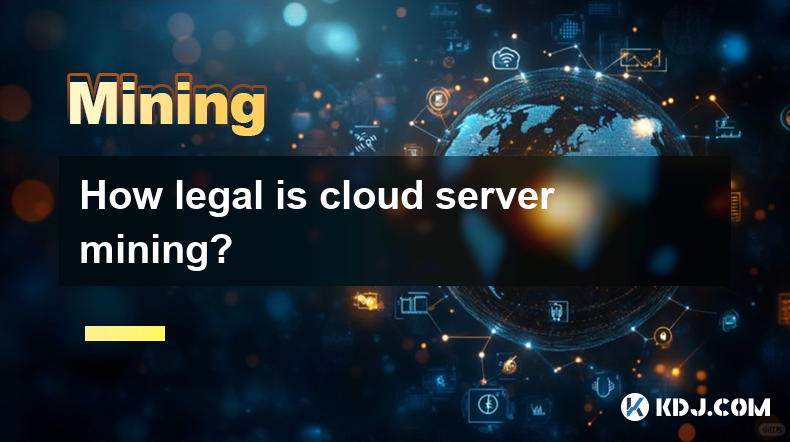
How legal is cloud server mining?
Apr 01,2025 at 08:08am
Cloud server mining has become an increasingly popular method for individuals and companies to participate in cryptocurrency mining without the need for expensive hardware and high electricity costs. However, the legality of cloud server mining can be a complex issue, as it varies by jurisdiction and depends on several factors. This article will explore...
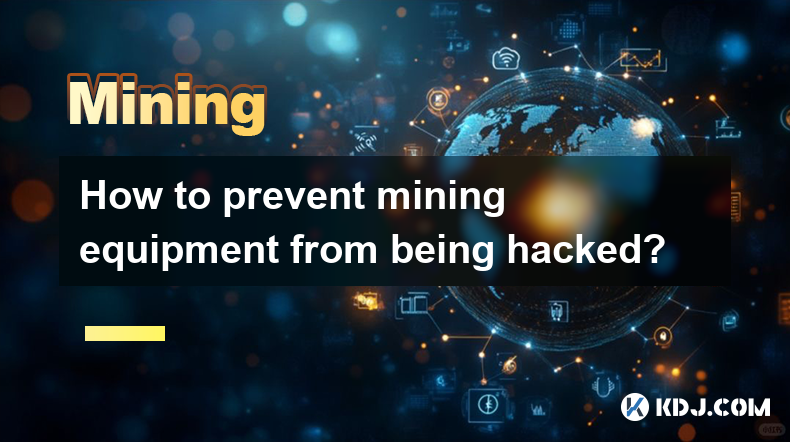
How to prevent mining equipment from being hacked?
Apr 01,2025 at 06:22am
Understanding the ThreatsCryptocurrency mining, while potentially lucrative, exposes your equipment to various cyber threats. These threats range from simple malware infections that steal your mining profits to sophisticated attacks that hijack your entire operation. Understanding these threats is the first step in effective protection. This includes r...
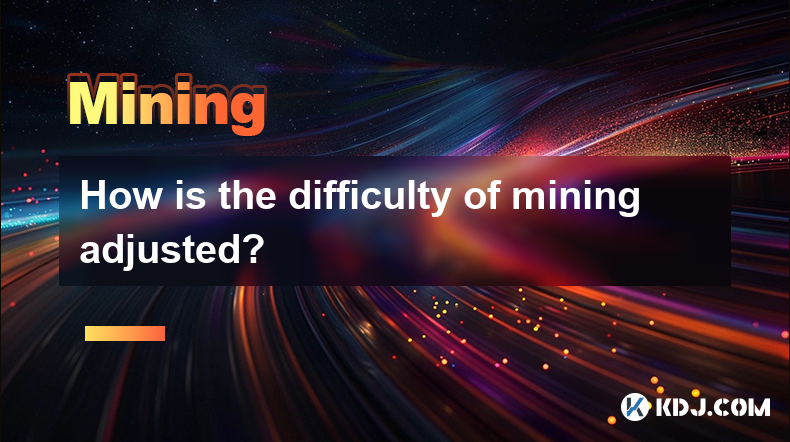
How is the difficulty of mining adjusted?
Apr 01,2025 at 07:14am
Understanding Bitcoin's Difficulty Adjustment MechanismBitcoin's mining difficulty is a crucial element ensuring the network's stability and security. It dynamically adjusts to maintain a consistent block generation time, approximately every 10 minutes. This adjustment prevents miners with overwhelming computing power from monopolizing block creation a...
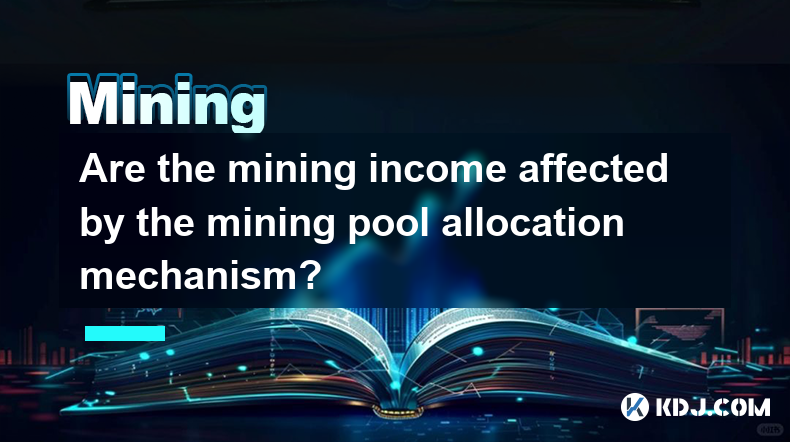
Are the mining income affected by the mining pool allocation mechanism?
Mar 31,2025 at 05:49pm
Understanding Mining Pool Allocation MechanismsMining pools aggregate the hashing power of many miners to increase the chances of successfully mining a block. The reward for successfully mining a block is then distributed among the pool's participants based on their contribution – usually measured in shares submitted. The allocation mechanism determine...

How does mining difficulty affect the profit?
Apr 01,2025 at 12:00pm
Understanding Mining Difficulty and its Impact on ProfitabilityMining difficulty in the context of cryptocurrencies refers to how computationally hard it is to solve the cryptographic puzzle required to add a new block to the blockchain. This difficulty is automatically adjusted by the network to maintain a consistent block time, typically around 10 mi...
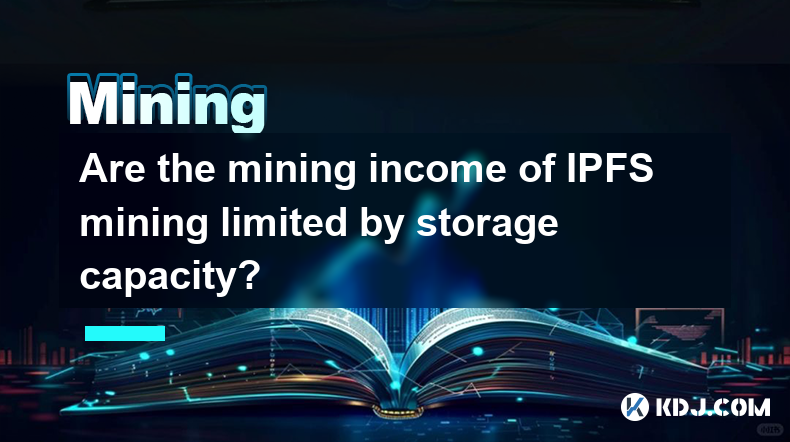
Are the mining income of IPFS mining limited by storage capacity?
Apr 01,2025 at 12:00am
Understanding IPFS Mining and its Revenue ModelIPFS (InterPlanetary File System) mining, unlike Bitcoin mining which relies on computational power, focuses on providing storage and bandwidth to the network. Miners earn rewards by making their storage available and contributing to the overall health and efficiency of the decentralized network. The amoun...

How legal is cloud server mining?
Apr 01,2025 at 08:08am
Cloud server mining has become an increasingly popular method for individuals and companies to participate in cryptocurrency mining without the need for expensive hardware and high electricity costs. However, the legality of cloud server mining can be a complex issue, as it varies by jurisdiction and depends on several factors. This article will explore...

How to prevent mining equipment from being hacked?
Apr 01,2025 at 06:22am
Understanding the ThreatsCryptocurrency mining, while potentially lucrative, exposes your equipment to various cyber threats. These threats range from simple malware infections that steal your mining profits to sophisticated attacks that hijack your entire operation. Understanding these threats is the first step in effective protection. This includes r...

How is the difficulty of mining adjusted?
Apr 01,2025 at 07:14am
Understanding Bitcoin's Difficulty Adjustment MechanismBitcoin's mining difficulty is a crucial element ensuring the network's stability and security. It dynamically adjusts to maintain a consistent block generation time, approximately every 10 minutes. This adjustment prevents miners with overwhelming computing power from monopolizing block creation a...

Are the mining income affected by the mining pool allocation mechanism?
Mar 31,2025 at 05:49pm
Understanding Mining Pool Allocation MechanismsMining pools aggregate the hashing power of many miners to increase the chances of successfully mining a block. The reward for successfully mining a block is then distributed among the pool's participants based on their contribution – usually measured in shares submitted. The allocation mechanism determine...

How does mining difficulty affect the profit?
Apr 01,2025 at 12:00pm
Understanding Mining Difficulty and its Impact on ProfitabilityMining difficulty in the context of cryptocurrencies refers to how computationally hard it is to solve the cryptographic puzzle required to add a new block to the blockchain. This difficulty is automatically adjusted by the network to maintain a consistent block time, typically around 10 mi...

Are the mining income of IPFS mining limited by storage capacity?
Apr 01,2025 at 12:00am
Understanding IPFS Mining and its Revenue ModelIPFS (InterPlanetary File System) mining, unlike Bitcoin mining which relies on computational power, focuses on providing storage and bandwidth to the network. Miners earn rewards by making their storage available and contributing to the overall health and efficiency of the decentralized network. The amoun...
See all articles























































































